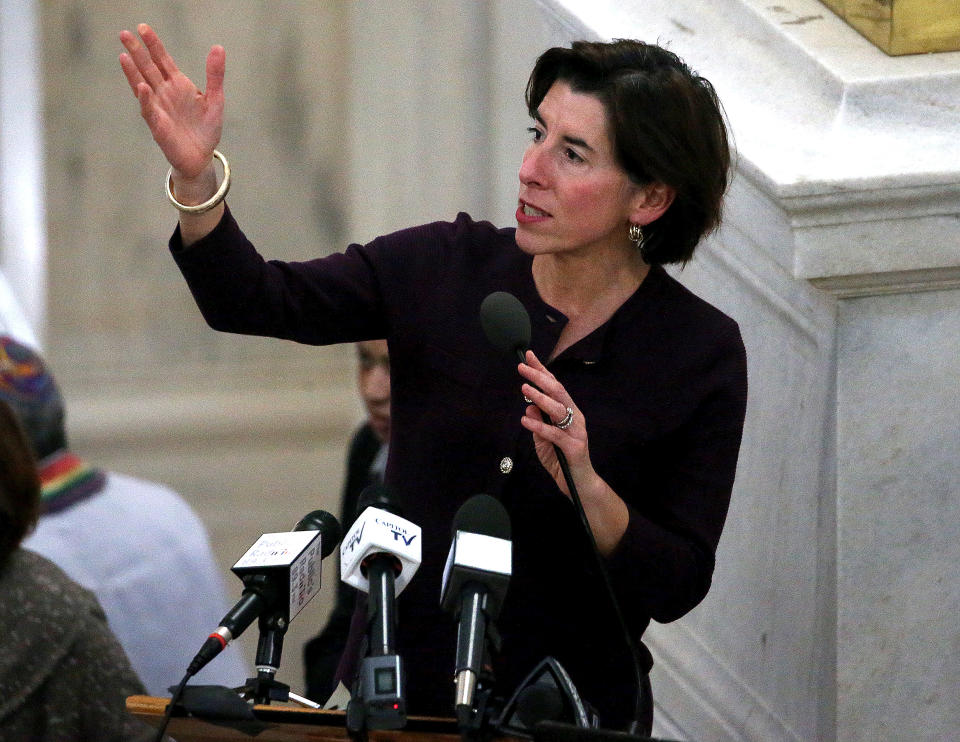There are new racial wealth gap numbers, and they're not pretty
Gary Cunningham, the president & CEO of Prosperity Now, came on Yahoo Finance to discuss his group’s recent scorecard on the racial wealth gap in the US.
It’s not a pretty picture even amid the booming economy.
The report finds that 37% of households (including 58% of black and Latino households) are "liquid asset poor" — defined as not having enough cash to subsist above the federal poverty line without income for more than three months.
This comes even as some, notably President Donald Trump, repeatedly tout record low unemployment rate among people of color.
2018 is being called “THE YEAR OF THE WORKER” by Steve Moore, co-author of “Trumponomics.” It was indeed a great year for the American Worker with the “best job market in 50 years, and the lowest unemployment rate ever for blacks and Hispanics and all workers. Big wage gains.”
— Donald J. Trump (@realDonaldTrump) December 29, 2018
It’s the distinction between “asset poverty” and “wage poverty” that Cunningham wants policymakers to focus on.
“A lot of people just look at income poverty and/or income in general and not look at people's assets,” he said. “This question of where people are really at versus where their income is at is two different realities.”
Cunningham appeared as part of Yahoo Finance’s ongoing partnership with the Funding our Future campaign, a group of organizations advocating for increased retirement security for Americans.
A lingering gap based on race
The scorecard found persons of color are significantly more likely to lack necessities like health care. The report found the uninsurance rate at 16.2% for people of color compared to 7.5% among white Americans. One in eight households skipped regular doctor visits due to costs in 2018, the report found.
On housing, an important metric in the report is what is known as "cost-burdened homeowners" meaning they spend greater than 30% of their monthly incomes just to cover housing costs. 27.7% of homeowner households are feeling the financial strain. Among homeowners of color, the number jumps to nearly 36%.
“Many people run into struggles just saving for emergencies that happen in their lives, let alone trying to save for the bigger item of owning a home,” Cunningham says.
A current Democratic message focused on wages
During Wednesday night’s debate, as in most appearances, the Democratic candidates looking to replace Trump focused on wages when talking about the economy. “We can actually empower workers and lift wages,” said former South Bend, Indiana, Mayor Pete Buttigieg. “Raise the wages of every childcare worker and preschool teacher,” said U.S. Sen. Elizabeth Warren. The “wealthiest family in America pays starvation wages,” added U.S. Sen. Bernie Sanders while talking about Walmart.

In a recent conversation with Yahoo Finance before Wednesday’s debate, Rhode Island Governor Gina Raimondo was pressed on what the Democratic message on the economy should be.
Like many, she opted to focus on wage growth. “People's 401Ks are looking good, but their wages aren't really looking that great,” said Raimondo, a Democrat and supporter of former New York City Mayor Michael Bloomberg. “It's true, the stock market has soared and that's a good thing but wages really aren't budging.”
Different statistics paint various pictures of how wages are doing under Trump. The president usually opts for a much simpler message often focused on stocks.
Highest Stock Market In History, By Far!
— Donald J. Trump (@realDonaldTrump) February 19, 2020
Cunningham’s argument is that the differences in assets is the underlying reason why the current booming economy — and high stock prices — are not helping everyone.
The group’s scorecard analyzes data from across all 50 states in five areas: financial assets & income, businesses & jobs, homeownership & housing, health care, and education.
Some agreement on emergency funds
The immediate policy proposal that might help everyone who’s struggling would be to encourage people to build a cushion of funds to stay afloat during an emergency or a job loss.
“We're working with Congress in a bipartisan way in order to get at this issue of how to get to emergency savings,” Cunningham says.
Nearly three in 10 Americans have no emergency savings whatsoever, according to Bankrate’s Financial Security Index released in June. One in three has less than $5,000 saved for retirement, according to 2018 data from Northwestern Mutual.
On the campaign trail, Buttigieg, U.S. Sen. Amy Klobuchar, and Bloomberg are among the candidates who have brought emergency funds into their plans for retirement savings. The idea is to dedicate a portion of retirement savings towards a fund that savers would then be able to tap without penalty for short-term needs.
It’s a first step to solving a much deeper problem that notably hasn’t been significantly lessened amid the longest economic expansion in U.S. history.
“If you add up the policies around wealth for low income people,” Cunningham says, “we're seeing employers are actually doing much more in terms of getting and moving people out of poverty than anyone else.”
Ben Werschkul is a producer for Yahoo Finance in Washington, DC.
Read more:
Congress might finally address the 'imminent danger' facing Social Security
Retirement expert: The 'easiest' crack to fix in the system is workplace access
A plan that could save Social Security and boost the economy — with one big catch
Read the latest financial and business news from Yahoo Finance
Follow Yahoo Finance on Twitter, Facebook, Instagram, Flipboard, LinkedIn, YouTube, and reddit.
